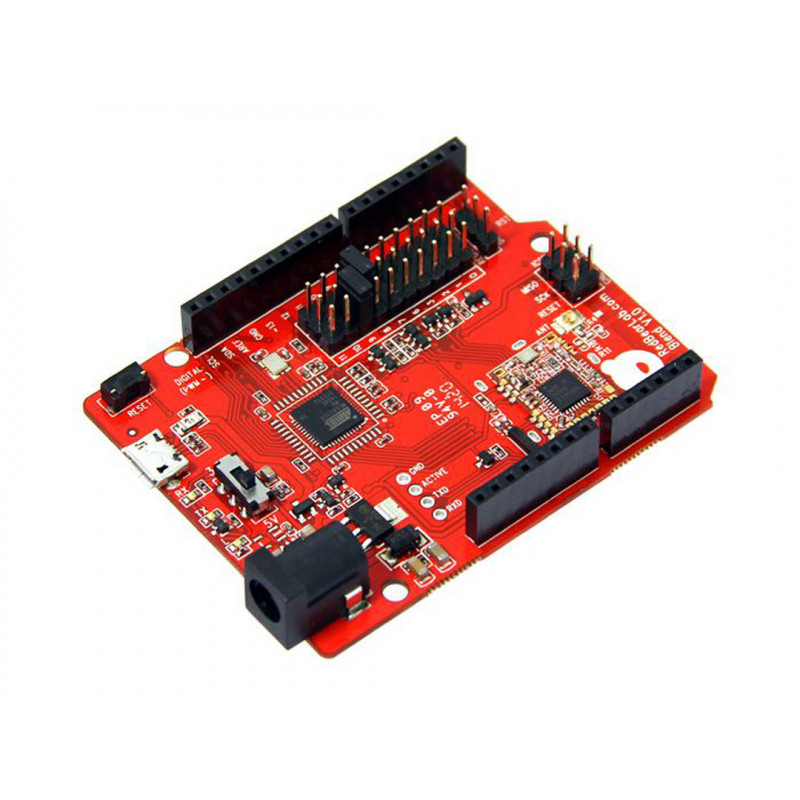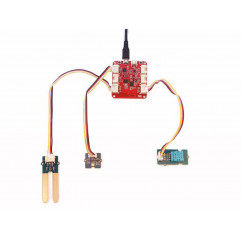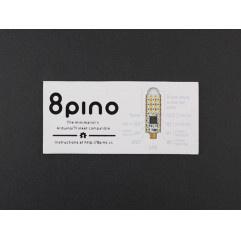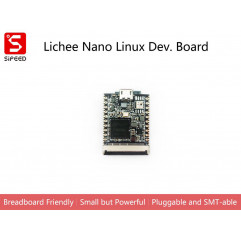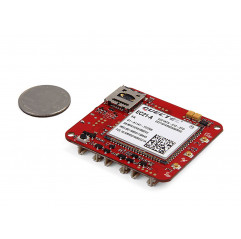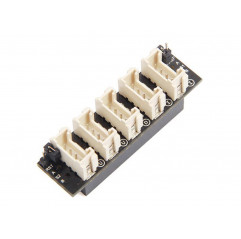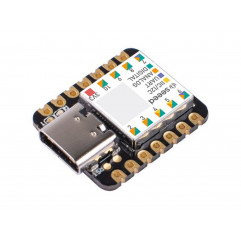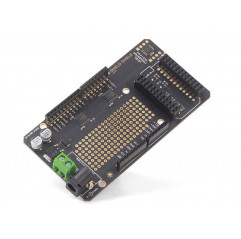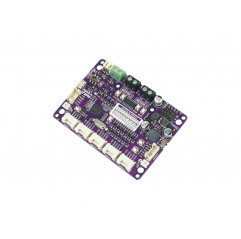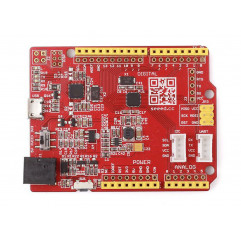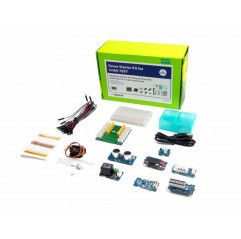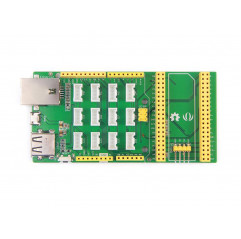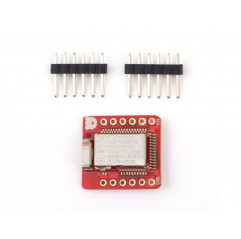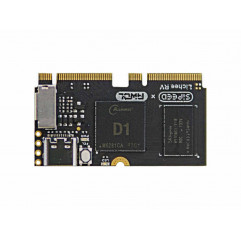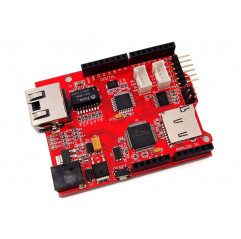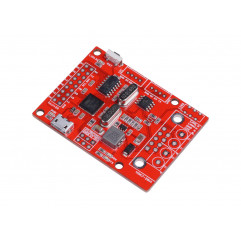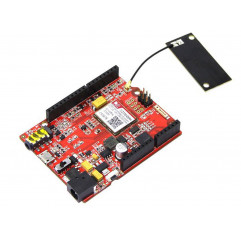Blend is an integrated developement board, we have "blend"ed Arduino with Bluetooth 4.0 Low Energy (aka BLE or Bluetooth Smart) into a single board. It is targeted for makers to develop low power Internet-Of-Things (IoT) projects quickly and easily.
Blend is 100% compatible with sketches and Shields that work with Arduino Leonardo. The micro-controller unit (MCU) is Atmel ATmega32U4 and the BLE chip is Nordic nRF8001. Blend runs as BLE peripheral role only, it allows BLE central role devices to establish connection with.
Current supported BLE central devices:
iOS 7
?iPhone 4s
?iPhone 5 (all models)
?iPod touch 5
?iPad 3/4/mini/Air
Android 4.3 or above (4.4 recommended for stability) with Bluetooth 4.0 hardware support
?Nexus 4
?Nexus 5
?Nexus 7
?(please report any other Android devices supported)
Windows Phone 8.1
?Nokia Lumia 630
?(please report any other Windows Phone devices supported)
Windows 8.1 with built-in Bluetooth 4.0 or USB dongle
Mac OSX 10.9.2 with built-in Bluetooth 4.0 or USB dongle
Linux with BlueZ 5.1 with built-in Bluetooth 4.0 or USB dongle
Features
Utilize Nordic Bluetooth Smart SDK for Arduino
Software development using Arduino IDE
Works with our free Android App and iOS App
Support 5V and 3.3V operating voltage
Selectable REQN and RDYN pins, from pin 0 to 3, 6 to 11
Flexible RF RESET pin, pin 4 or 5
Over-the-Air download of sketch to Blend (available soon)
Besides the on-board PCB antenna, option to use SMA connector for external antenna (soldering is required)
Specification
Microcontroller Atmel ATmega32U4
Wireless Chip Nordic nRF8001
Operating Voltage 3.3V or 5V
Input Voltage
5V (USB)
6.5-12V (DC input or VIN)
Note: Use only one power source at a time,
otherwise you will damange the board.
Clock Speed 16MHz
Connectivity
Bluetooth 4.0 Low Energy
micro-USB
Serial (TX/RX)
I2C
SPI
Flash Memory 32KB (of which 4 KB used by bootloader)
SRAM 2.5KB
EEPROM 1KB
Dimensions 73 x 54 x 12mm (120 x 73 x 25mm with packaging)
Weight 19g (37g with packaging)
I/O Pins 20
How It Works
The nRF8001 chip communicates with ATmega32U4 through the ACI (Application Controller Interface). The ACI is similar to SPI but not actually works as SPI. SPI is consist of MOSI, MISO, SCK and SS, whereas ACI is consist of MOSI, MISO, SCK, REQN and RDYN.
Since the nRF8001 chip may receive data anytime even not selected by SPI master (Atmega32U4), so the SS line is not needed.
For the ACI, data exchange still through MOSI and MISO, and SCK provides the clock generated by master.
When master wants to request data from BLE Shield, it puts the REQN to low until RDYN line is put to low by BLE Shiled, and then master generates the clock to read out the data. After reading out the data, master will release the REQN and BLE Shield release the RDYN, put them to high.
If the nRF8001 has data to transmit to master, it will put the RDYN to low to indicate master, even though the master has not requested data and REQN is idle. If the master detectes a low level condition on RDYN, it will put REQN to low and generate the clock to read out the data. After reading out the data, both REQN and RDYN will be put to high. Note that REQN is controlled by master while RDYN is controlled by the nRF8001 chip.
Operate at 3.3V or 5V
According to the Atmega32U4 specification, the MCU can run at either 8MHz@3.3V or 16MHz@5V. Normally, you should set the voltage selection switch to 5V to run the board at 16MHz. However if you need to connect to shields or external components, such as sensors or MCU, which accept 3.3V only, you should change the operating voltage to 3.3V using the voltage selection switch.
Note that while Blend is running at 3.3V, the Atmega32U4 will still run at 16MHz which is outside Atmel's specification, the CPU is overclocked (we have not seen any issue so far).
Support
For questions about Nordic Bluetooth low energy SDK for Arduino, please visit Nordic Developer Zone.
All other questions regarding Blend, please visit our Blend Forum.
